Head-To-Head: Samsung Galaxy Tab 3 Vs. Apple iPad Mini
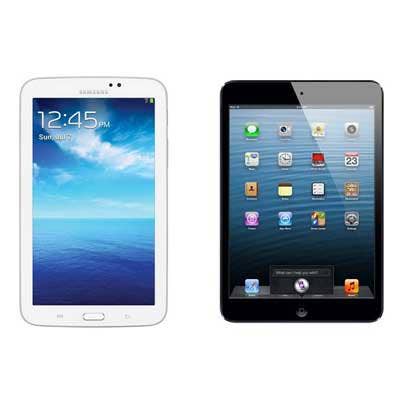
Small Tablets A Big Deal
Add another form factor to Samsung's tablet repertoire, and another model to Apple's list of competitors. Samsung earlier this month unveiled the Galaxy Tab 3 7.0, a 7-inch version of its latest fab-tab series that pits directly against one of Apple's most popular devices. The two are roughly equivalent in terms of outer appearance, but inside is a completely different story. Here's how Samsung's latest Tab stacks up technically with the Apple iPad mini.
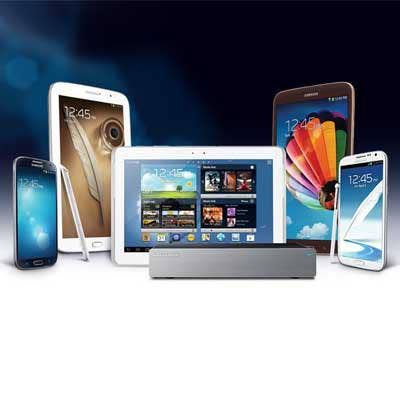
Freebies
Free stuff. Everybody likes it, right? That's what Samsung is banking on with its latest promotion surrounding the Galaxy Tab 3. The company throws in enough free stuff to put the Columbia House Record Club to shame. With the Galaxy Tab 3, Samsung includes a year of Boingo Wi-Fi service, three months of Hulu Plus, a $10 Google Play store credit and a two-year DropBox subscription. In all, Samsung throws in $200 worth of freebies. You might say that for every $199 device someone buys, Samsung gives their money back plus $1. Free stuff from Apple? The iPad mini comes with 5 GB of iCloud storage and some stickers.
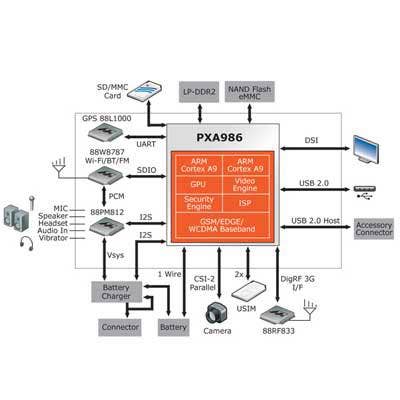
CPU, GPU And Memory
The new Galaxy Tab 3 7.0 is built around a Marvell PXA986 processor, which contains two ARM Cortex A9 cores running at 1.2 GHz. According to Marvell specs, the SoC's integrated GPU can handle 3-D graphics at a rate of 96 million triangles per second, and offers a peak fill rate of 1.56 billion pixels per second. The iPad mini is built around Apple's A5 custom SoC, the same processor found in the iPad 2. It, too, has two ARM Cortex-A9 cores, but runs at 1.0 GHz. There's also a NEON SIMD instruction accelerator to boost application performance. For graphics, Apple's SoC contains two PowerVR GPU cores. As for memory, iPad mini contains 512 MB of system RAM for running applications and is available with 16 GB, 32 GB or 64 GB for application and data storage. Galaxy Tab 3 7.0 comes with 1 GB of system RAM and 8 GB for storage. Its microSD card can add as much as 64 GB more.
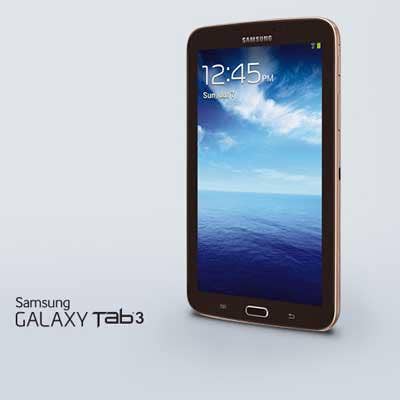
The Displays
Both devices are dominated by bright, crisp, LED-backlit capacitive, multitouch LCD panels. The iPad mini delivers a 7.9-inch screen with a resolution of 1,024 x 766; good for 163 ppi. Apple's fingerprint-resistant IPS panel offers an enormous range of colors and a wide range of viewing angles. The 7-inch PLS panel on Samsung's Galaxy Tab 3 offers a maximum resolution of 1,024 x 600, which comes out higher (at 169.5 ppi) than Apple's because it's nearly an inch smaller diagonally. Besides, topping the competition by six-and-change pixels per inch is meaningless if it's not detectable to the naked eye. At this size, both displays look amazing and provide enough real estate for easy navigation and app usage without the need for a microscope.
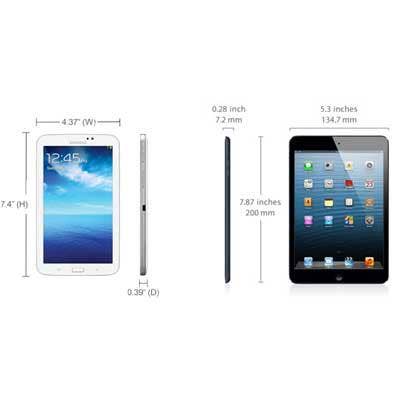
Construction, Dimensions
The Galaxy Tab 3's hard plastic shell is surrounded by a metallic band. It's just as comfortable to hold as any small tablet, and we're not offended by polycarbonates. Apple's aluminum unibody gives iPad mini a solid, sturdy feel and simplifies servicing. Side by side, Apple's device appears wide and squat while Samsung's looks tall and slender. In essence, the two are fairly close in size. Apple's iPad mini measures 7.9 inches long, a half-inch longer than the 7.4-inch length of the 7-inch Galaxy Tab 3. Almost an inch narrower than Apple's, Samsung's measures 4.4 inches wide to Apple's 5.3 inches. But Apple's design mastery really shines in device thickness. The iPad mini measures an amazing 0.28 inches compared to Samsung's 0.39 inches. That tenth of an inch somehow makes the iPad mini seem lighter, even though both devices weigh just shy of 11 ounces.
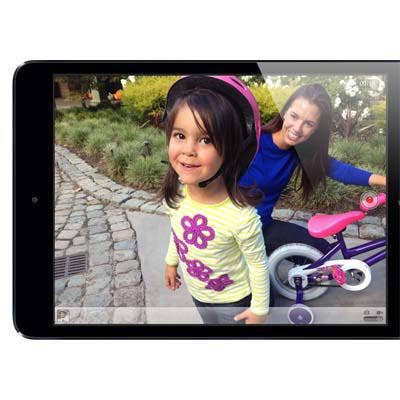
Cameras And Sound
While Samsung's camera software is still top-notch, the company surprised us with the relatively meager visual sensors it built into the Galaxy Tab 3 7.0. The front cameras in the Samsung and Apple devices are about the same. Samsung's face camera is a fixed-focus 1.3MP job (1,280 x 960), compared with Apple's 1.2MP unit. For rear-shutter snaps, Samsung provides just a 3MP (2,048-x-1,536) fixed-focus shooter versus Apple's 5MP camera with 2.4f aperture and five-element autofocus lens. Also unfortunate, the Galaxy Tab 3 can operate only one camera at a time. Since testing the excellent Galaxy S4, we're disappointed by any Android device that can't take pictures using both cameras at once for picture-in-picture effects. Apple's rear camera can capture 1,080p video with image stabilization and backside illumination. Its front camera captures 720p video. For video, Samsung's rear camera is capped at 720p and its front camera offers a single resolution of 640 x 480. Apple offers geotagging for photos and videos, Samsung only for photos. Both tablets include two speakers and decent stereo sound.
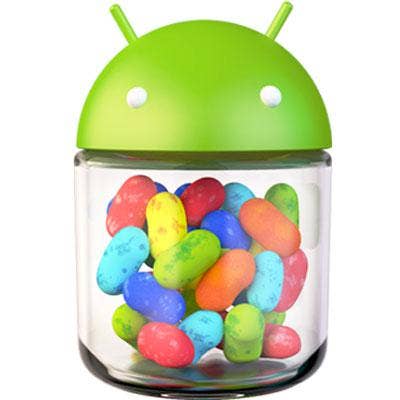
Communications, Battery
The devices are on fairly even ground in terms of radios. Both have dual-band Wi-Fi a/b/g/n and Bluetooth 4.0. Neither has NFC. Both devices build in sensors for GPS, gyro, accelerometer, compass and ambient light. Both offer an LTE option; Apple also provides iPad minis for GSM/EDGE and CDMA networks. The Galaxy Tab 3 also can control televisions, cable set-top boxes, audio/video and other electronic components thanks to an IR emitter.
Samsung includes a 4000 mAh battery but does not publish ratings or estimates of usage hours between charges. On its 4490 mAh battery, Apple claims nine hours while surfing the web with a cellular radio or 10 hours using Wi-Fi, listening to music or watching videos. Over the years, we've seen tremendous improvements in Samsung's battery-life algorithms, but Android is no Apple. And iOS is still worlds ahead in terms of battery life. iPad mini runs iOS 6.0; Galaxy Tab 3 7.0 runs Android 4.1.2 Jelly Bean.
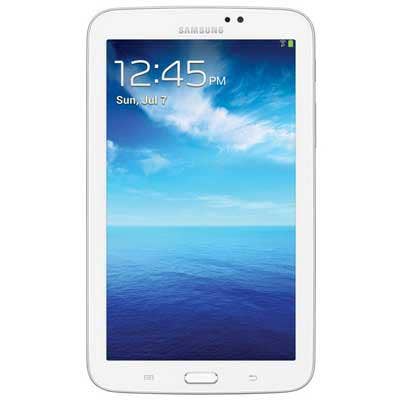
Ins And Outs
Galaxy Tab tablets employ a microUSB port for charging and most file I/O. File transfer works with Windows machines out of the box, but Macs need to download the Android File transfer utility. In either case, there's root-level access to Android's file system. Media also can be moved across the Galaxy's file system via the microSD slot, which supports cards as large as 64 GB. On the other hand, the iPad mini cannot save data directly to a USB stick or other removable storage medium. Like all newer iPads and iPhones, all I/O happens across Lightning Port, Apple's all-digital, multipurpose connector for hooking up monitors, docks and other peripherals. The Lightning connector is sturdier than microUSB and is reversible, a convenience that also helps eliminate damage from cable orientation errors. Samsung also opted not to include support for SlimPort, which permits connections to external DisplayPort or HDMI monitors, docking stations and other peripherals through the microUSB port. Both devices come with a 3.5-mm headphone jack, microphone and buttons for power, volume and Home. Galaxy Tab adds soft keys for menu and back.
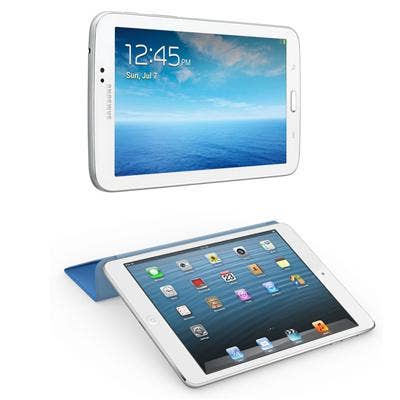
Pricing And Availability
The 16-GB, Wi-Fi-only iPad mini sells for $329 in black or white. The same unit for AT&T, Sprint or Verizon costs $459. For any model, add $100 to Apple's list price for each 16-GB increment. The iPad mini has been selling since November 2012. Samsung's price for a Wi-Fi-only Galaxy Tab 3 7.0 is $199 with 8 GB. Shipping since July, it's available in the U.S. in black, white and brown.